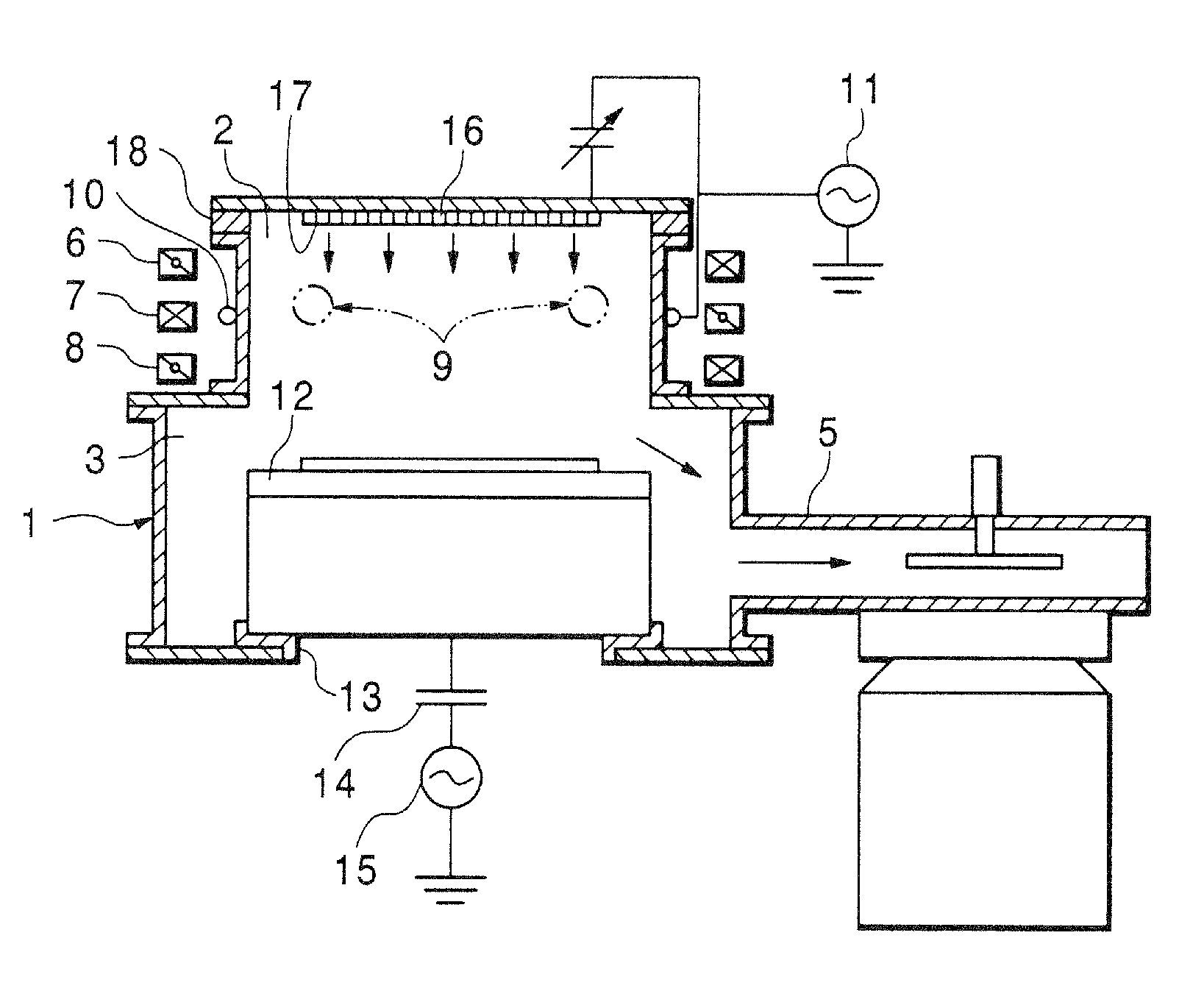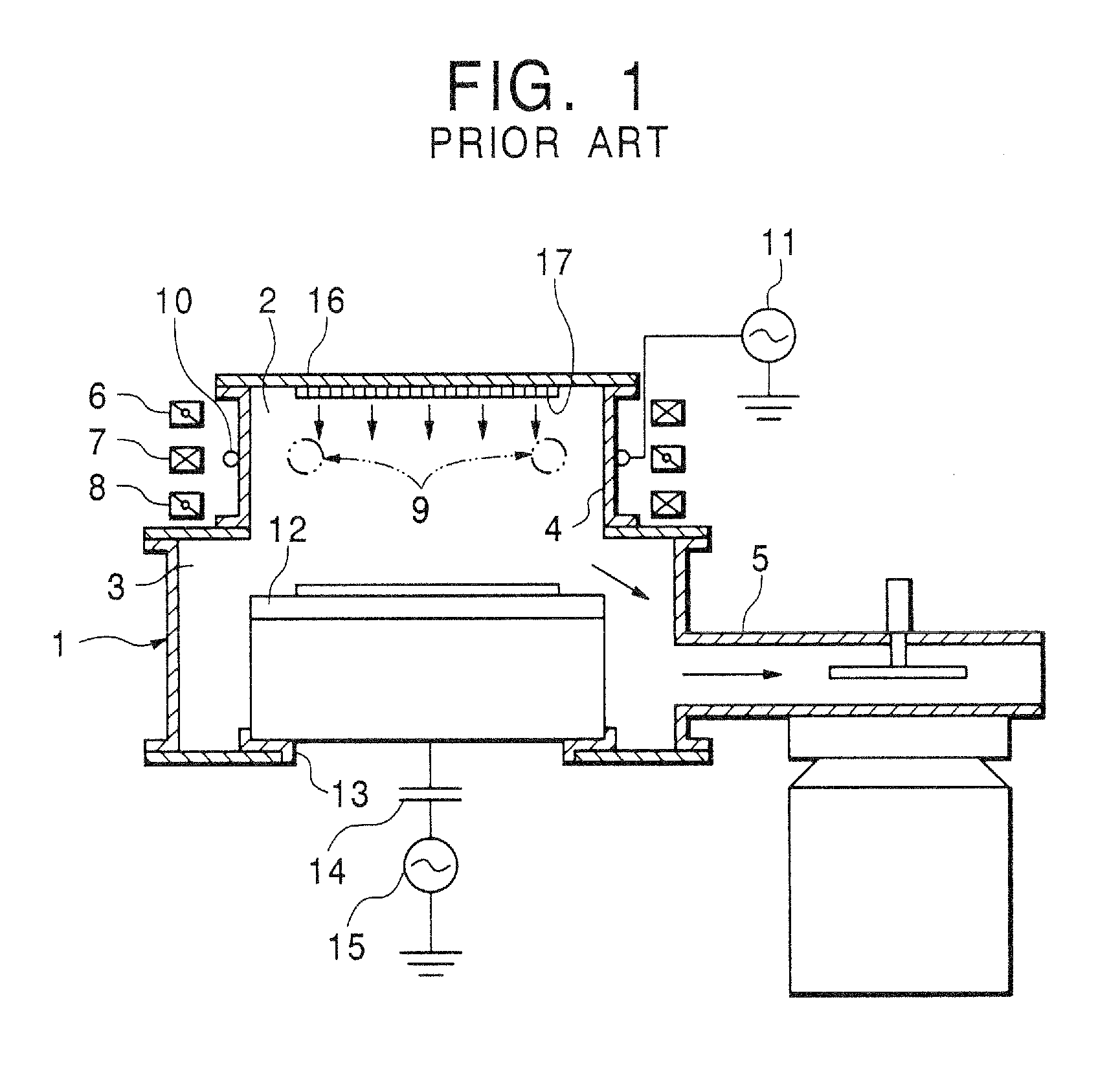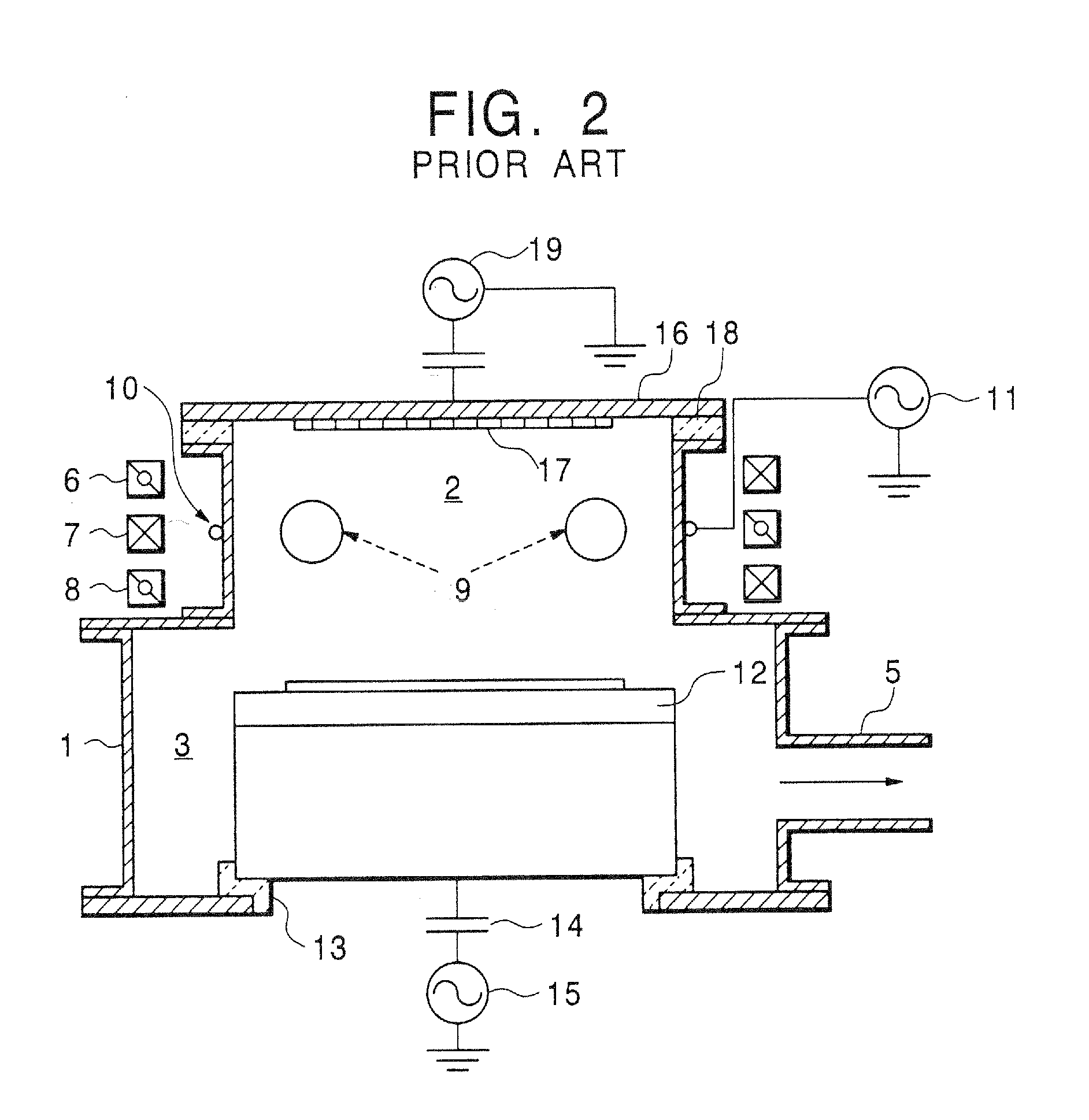Plasma processing apparatus
a processing apparatus and plasma technology, applied in the direction of electrical apparatus, plasma technique, electric discharge tubes, etc., can solve the problems of long time-consuming and laborious etching, inability to satisfactorily etch by simply chipping, and generation of dust, so as to achieve high efficiency, simple structure, and low cost.
- Summary
- Abstract
- Description
- Claims
- Application Information
AI Technical Summary
Benefits of technology
Problems solved by technology
Method used
Image
Examples
Embodiment Construction
[0061]Hereinafter, embodiments of the present invention will be described with reference to FIGS. 3 to 6 of the accompanying drawings.
[0062]FIG. 3 shows a schematic structure of a magnetic neutral loop discharge etching apparatus of the invention. In FIG. 3, the same constituting elements as those of the conventional example shown in FIGS. 1 and 2 are indicated by the same reference numerals and the detailed descriptions for those elements will be omitted.
[0063]The etching apparatus shown in FIG. 3 employs a two frequency discharge method that is a modification of the aforementioned three-frequency discharge method. In this etching apparatus, a ground electrode provided at the position opposite to the substrate mounting electrode 12 is an opposite electrode whose potential is in a floating state by a dielectric so as to apply weak radio frequency bias power to the opposite electrode (top plate 16). Further, in this etching apparatus, a shunt is provided at an arbitrary position of a...
PUM
| Property | Measurement | Unit |
|---|---|---|
| Electric potential / voltage | aaaaa | aaaaa |
| Electric field | aaaaa | aaaaa |
Abstract
Description
Claims
Application Information
 Login to View More
Login to View More - R&D
- Intellectual Property
- Life Sciences
- Materials
- Tech Scout
- Unparalleled Data Quality
- Higher Quality Content
- 60% Fewer Hallucinations
Browse by: Latest US Patents, China's latest patents, Technical Efficacy Thesaurus, Application Domain, Technology Topic, Popular Technical Reports.
© 2025 PatSnap. All rights reserved.Legal|Privacy policy|Modern Slavery Act Transparency Statement|Sitemap|About US| Contact US: help@patsnap.com



